
Hybrid sourdough? What’re we doing here, crossing a tiger and a lion?
Nope, a hybrid sourdough is a dough that uses both natural yeast from a starter as well as commercial yeast. This results in a lightly sour sourdough that is exactly what I’m after and I make this bread almost every week for myself. Add a little roasted garlic in there and you’re golden.
If you’re new to bread, I really recommend you check out my post on how to make bread, so you can understand what I mean by proofing, shaping, scoring, etc. I don’t really delve deep into all that in this recipe because then it would be super long and once you’ve made bread a few times, you no longer need the super in-depth instructions anyways.
And if you don’t have a starter yet, check out Baked’s starter how-to, it’s super well-laid out and clear. It takes a little while to get one going, but once it’s good, you can keep it for years! I keep mine in the fridge until I need it, that way I’m not feeding it every single day. If you’re wanting a great loaf that doesn’t require a starter, the bread tutorial I mentioned in the paragraph above is a great long-fermentation bread that only needs commercial yeast (rather than natural), and you can easily add roasted garlic to it!
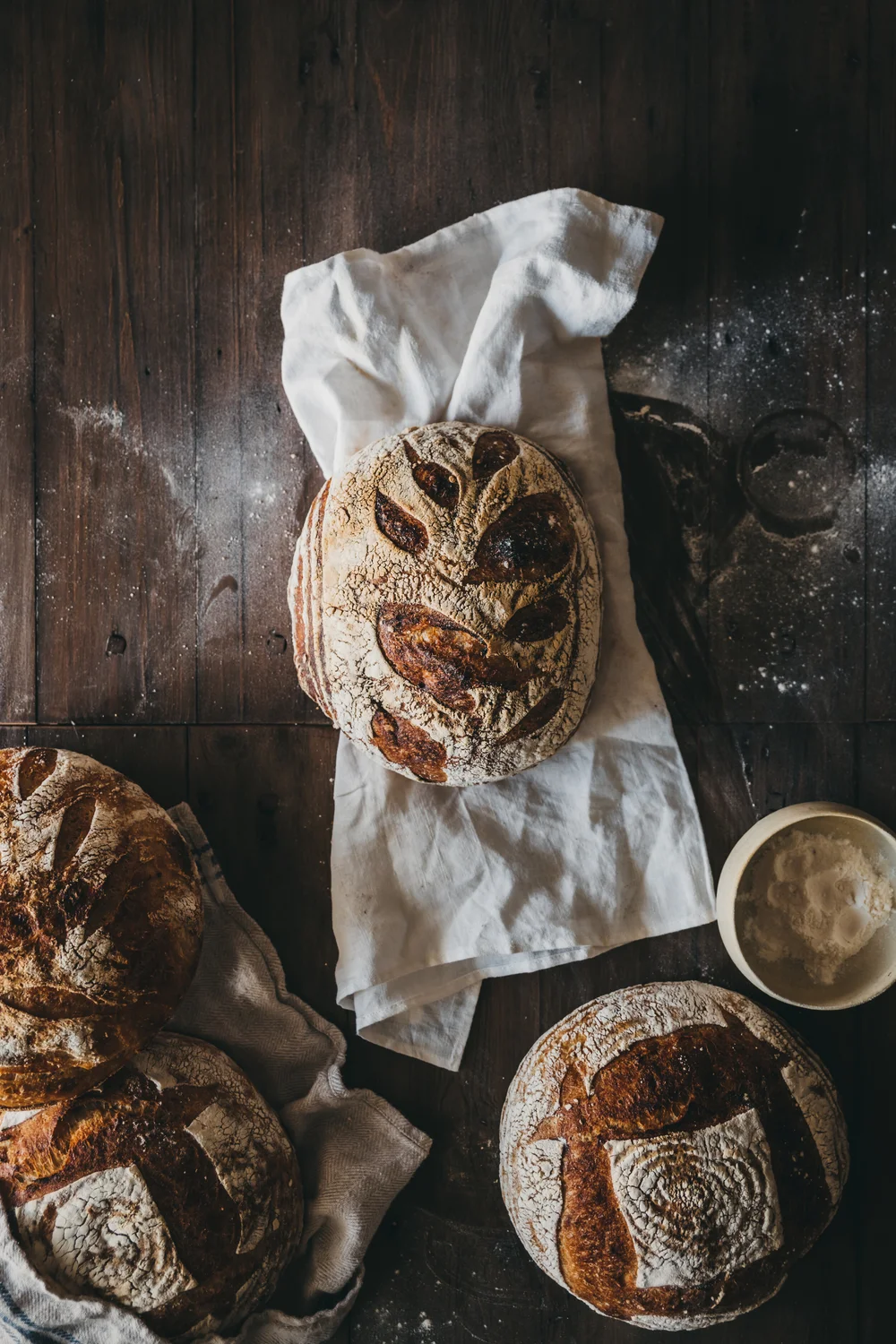

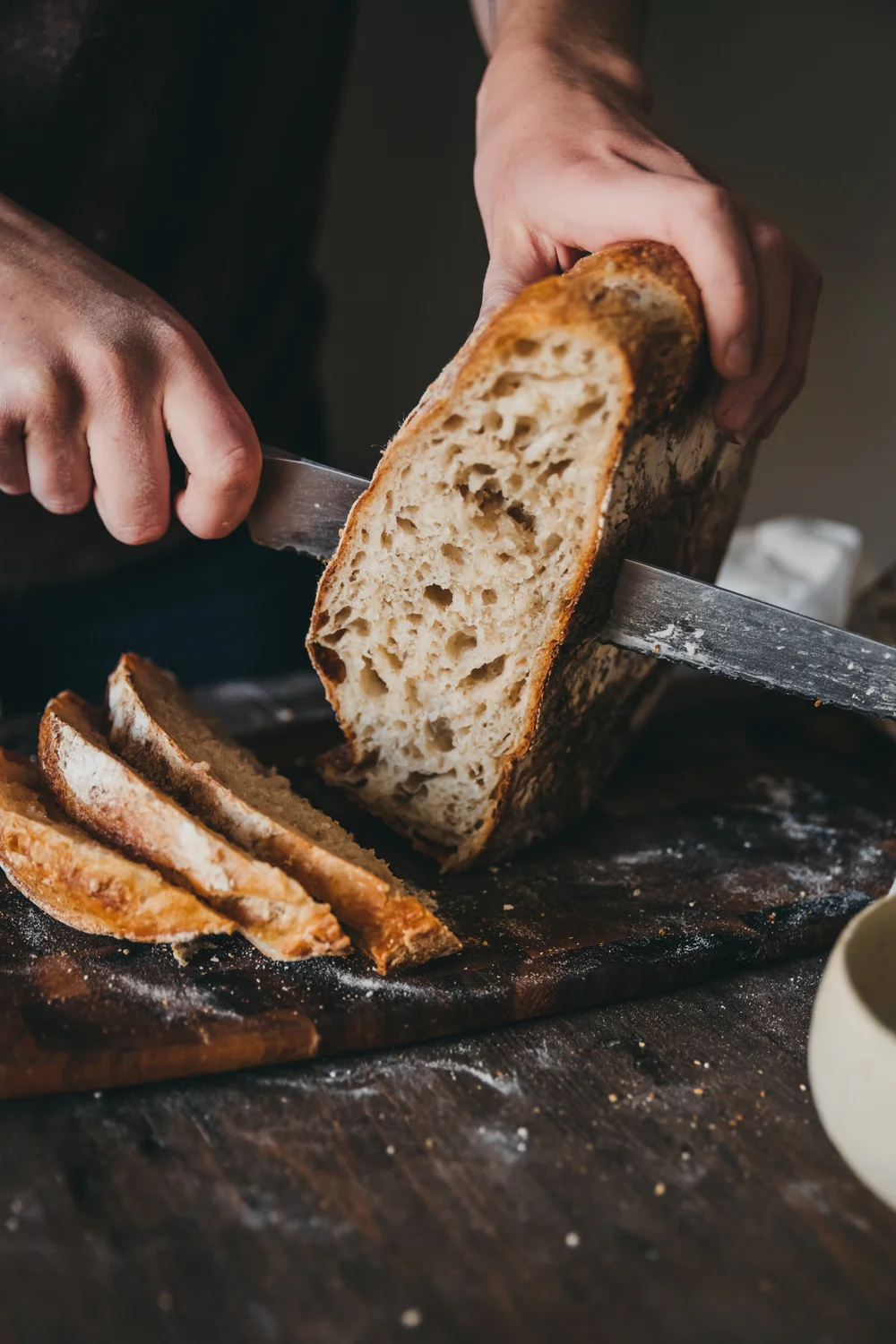

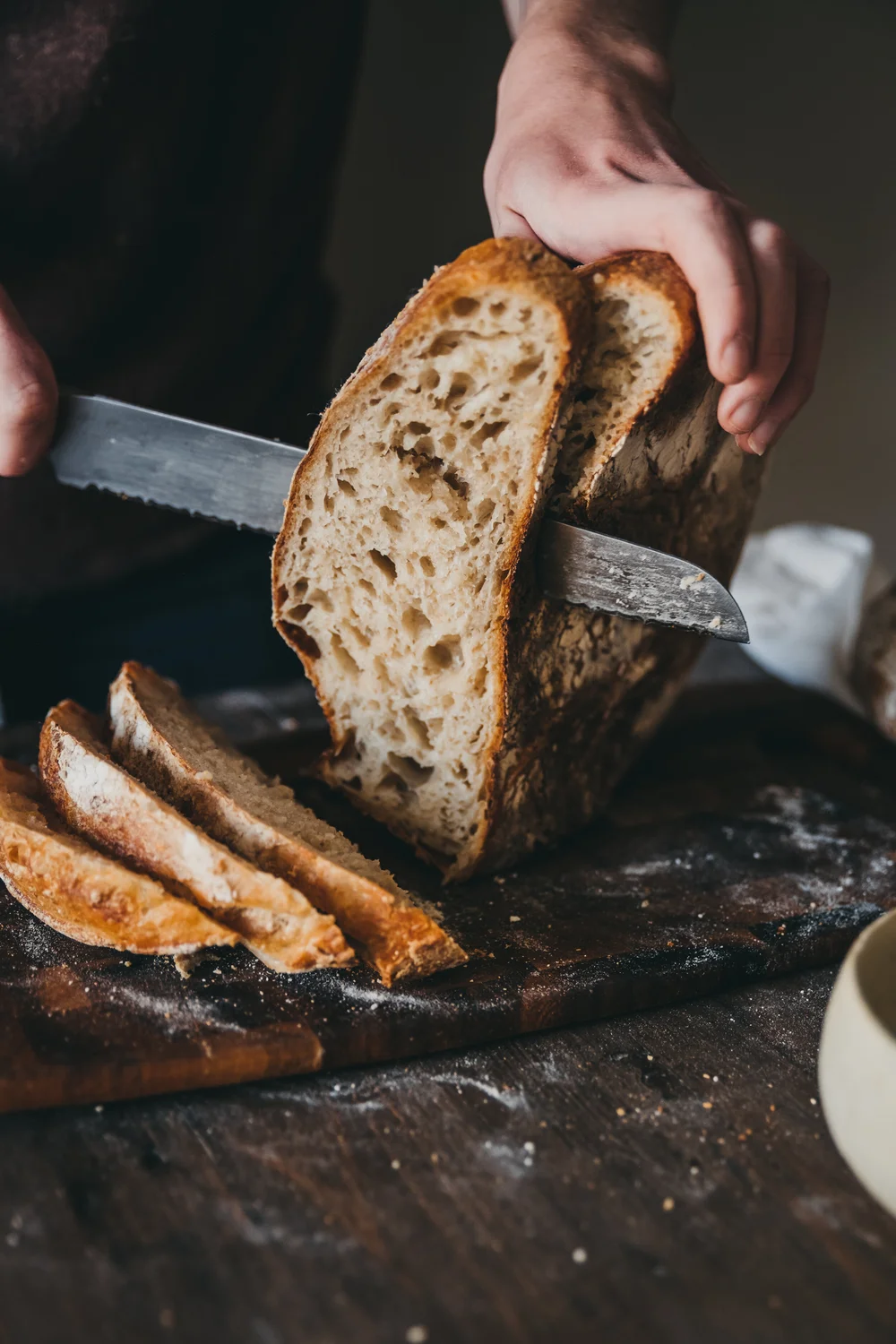
I’ve been baking bread a hell of a lot these days, seeing as I have no job and making bread makes me feel productive. Some loaves have been sold to friends, some have been given to friends as payment, some have been sliced and frozen for later use. I think I’ve made 12 loaves in the last week. It’s a good distraction from thinking about the whole world going on lockdown and wondering if it’ll be 6 months before I can get my job back or not and if my highly tourist dependent ski town will even have tourists in the next winter season… But hey, the longer I don’t have a job, the more I’ll be posting here, so that’s a win for some people, I guess.
Hope everyone’s doing alright in these weird, confusing, somewhat terrifying times. It’s different and everyone’s trying to adjust but at least we’re doing it together (at a distance, 2 metres bitches, get back).
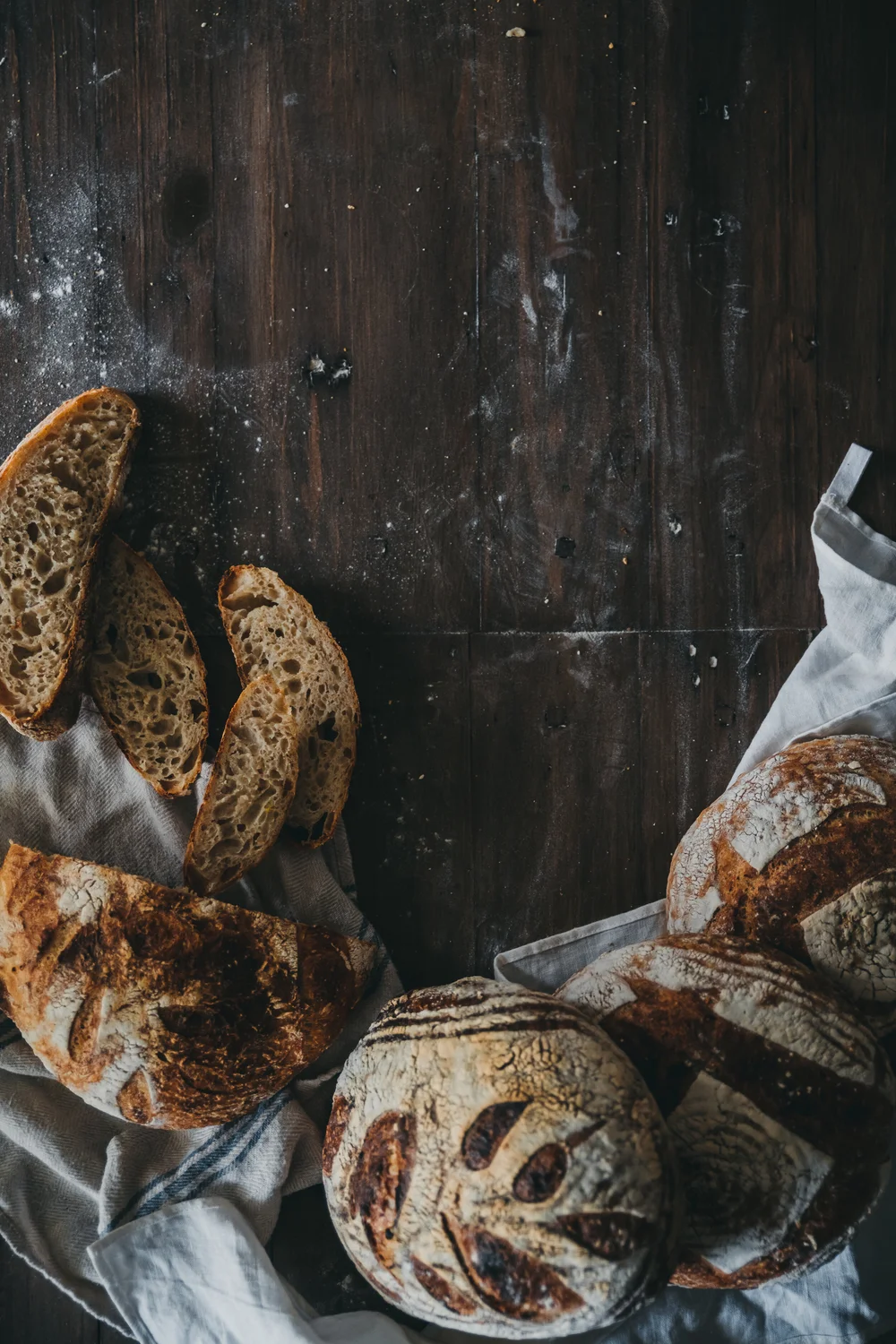


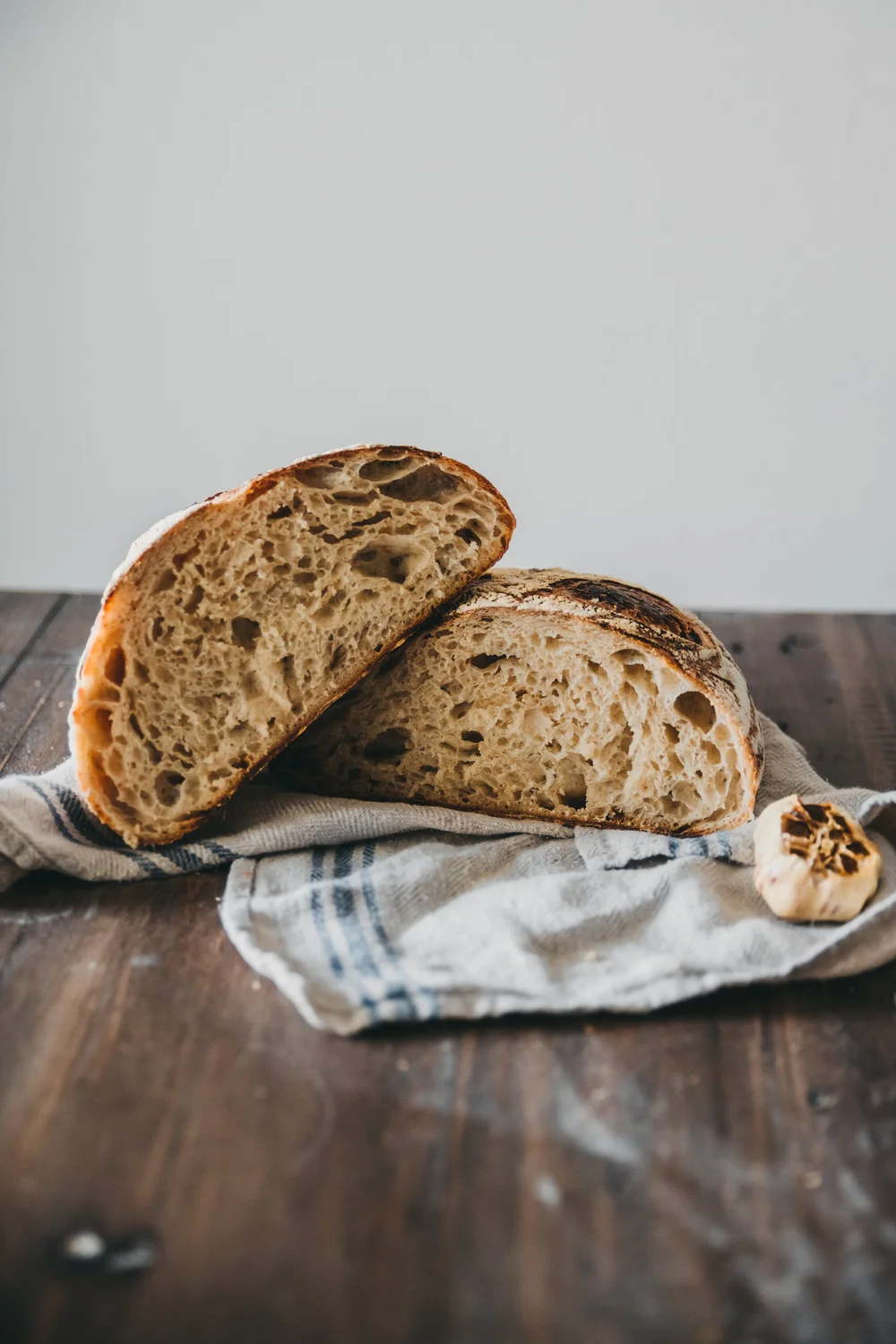
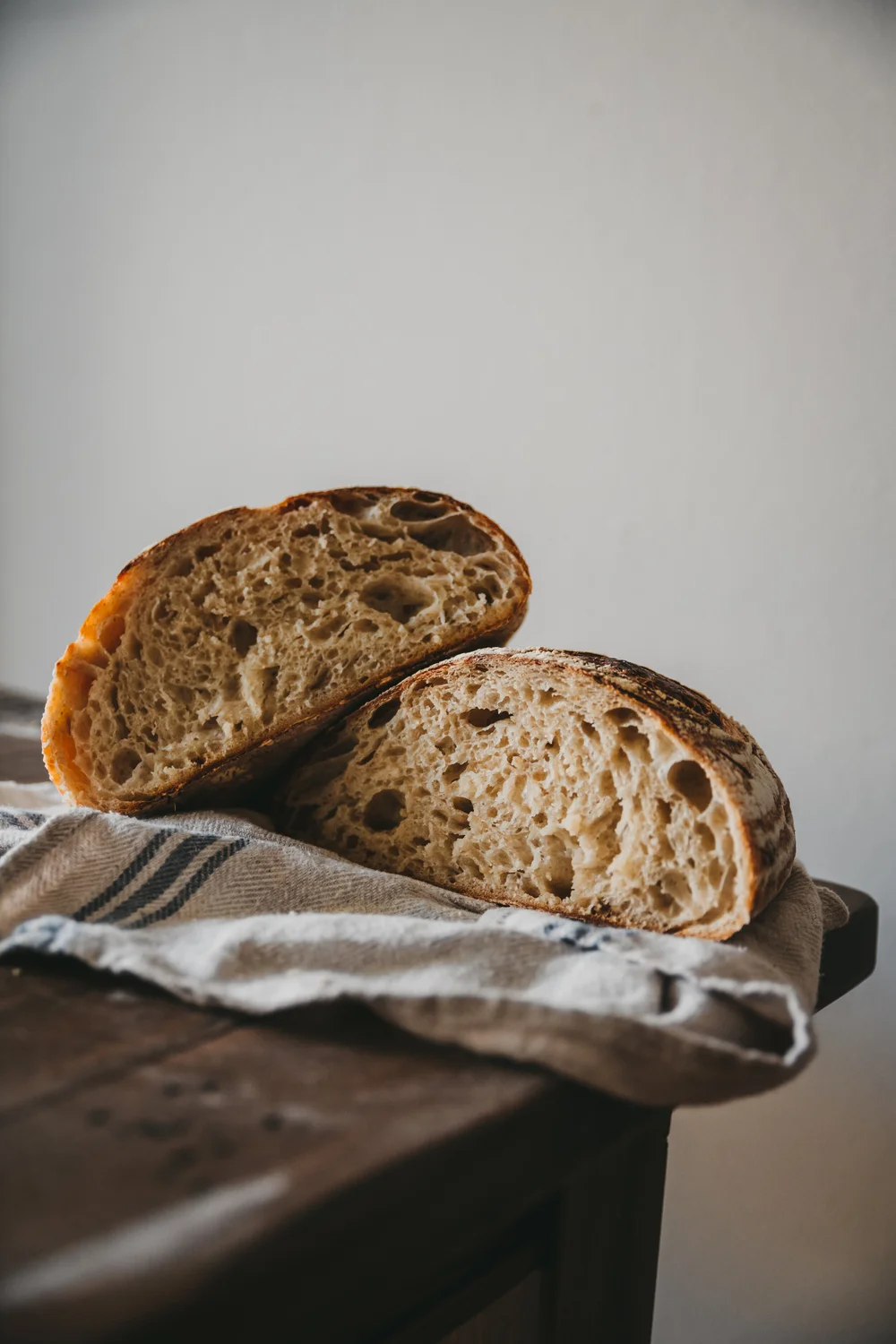

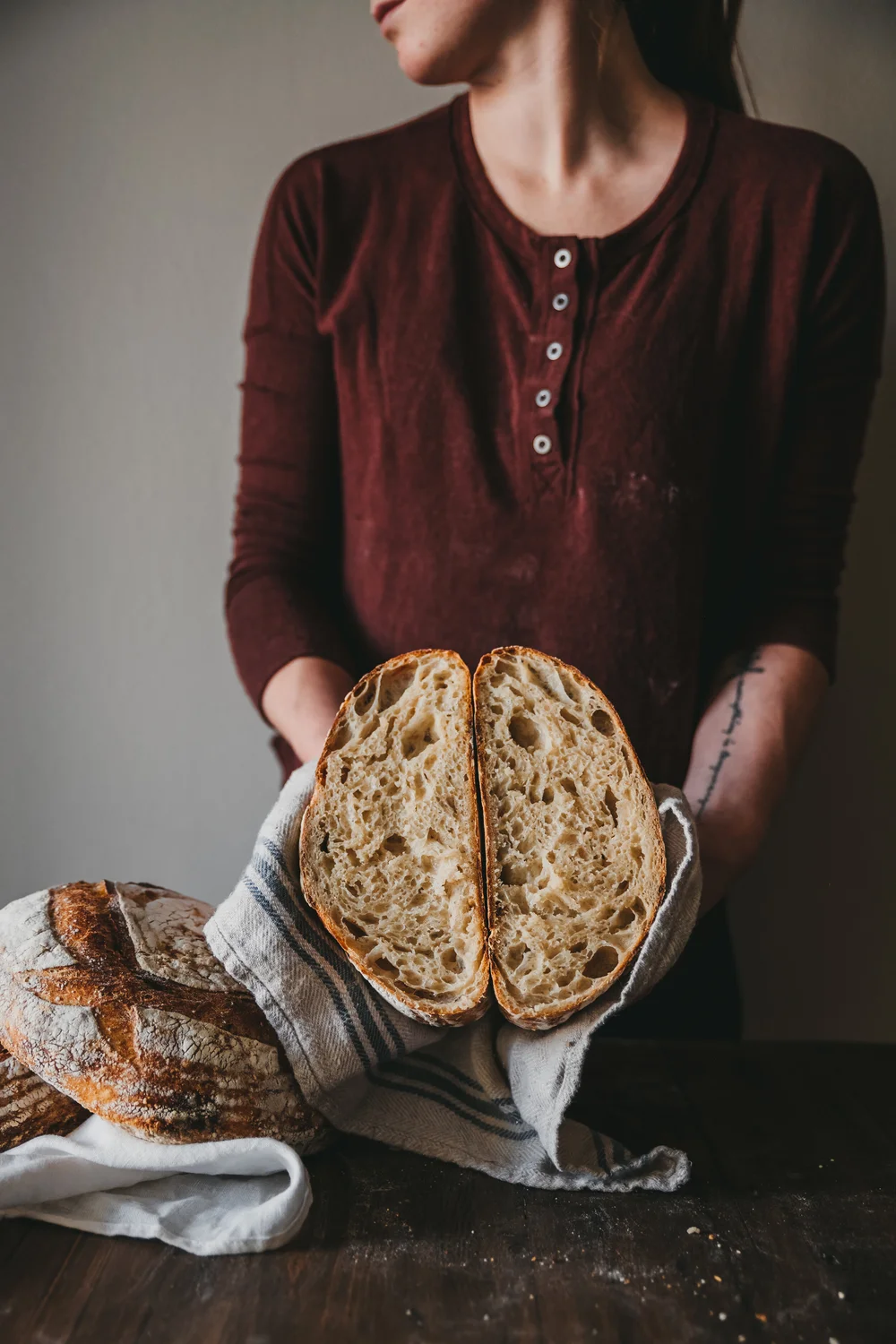
Roasted Garlic Hybrid Sourdough
Recipe from Flour Water Salt Yeast
Roasted Garlic
3-4 heads of garlic
Splash of olive oil
Levain
100 g mature active starter
400 g white flour
100 g whole wheat flour
400 g water, 29 C to 32 C
Final Dough
740 g white flour
60 g whole wheat flour
620 g water, 32 to 35 C
Roasted garlic cloves
21 g fine sea salt
2 g instant dried yeast
360 g levain
Timeline: Feed the levain at 8am, mix the final dough at 3pm, shape into loaves at 8pm, proof the loaves in the fridge overnight, and bake around 8 to 10am the next morning
Preheat the oven to 325 F. Cut the top 1/4 off the garlic heads and place on a square of tinfoil. Brush with some olive oil and create a package with the tinfoil. Roast for 45-60 minutes, until deep golden brown and mushy. Remove from the oven and let cool, then mush up with a fork. Set aside.
24 hours after your previous feeding of the starter, discard all but 100 g of the starter in a large bowl or plastic tub. Add the white flour, whole wheat flour, and water, and mix by hand until incorporated. Cover and let rest at room temperature (18 C) for 6 to 8 hours.
For the final dough, combine the flours and water by hand in a very large container (12 quart plastic tub is what I use). I like to add the mashed garlic to the water so it gets distributed evenly throughout the dough, but you can also add it in after the autoylse.
Cover and let rest for 20 to 30 minutes. This is the autolyse.
Sprinkle the salt and yeast evenly over the top of the dough. Put a bowl with about a fingers depth of warm water on your scale so you can easily remove the levain after it’s weighed. With wet hands, transfer 360 g of levain into the container. The remaining leavain is your starter.
Transfer the weighed levain to the very large tub. Mix by hand, using the pincer method (read this if you need to know about the pincer method and other bread terms - includes helpful GIFs!), alternating with folding the dough to fully integrate the ingredients.
This dough needs three to four folds. It’s easiest to apply the folds during the first 1.5-2 hours after mixing the dough.
When the dough is 2.5 times it’s originally volume, about 5 hours after mixing, it is ready to be divided.
Moderately flour a work surface about 2 feet wide. Flour your hands and sprinkle a bit of flour around the edges of the tub. Tip the tub slightly and gently work your floured hand beneath the dough to loosen it form the bottom of the tub. Gently ease the dough out onto the work surface without pulling or tearing it.
With floured hands, pick up the dough and ease it back down onto the work surface in a somewhat even shape. Dust the area in the middle where you'll cut the dough with a bit of flour. Cut the dough into 2 equal size pieces.
Dust two proofing baskets (or equivalent) with flour.
Fold the dough and flip it over so the seam is on the work surface in an area cleared of flour - at this point you want the friction, or grip, of a clean surface.
Shape the dough. Place each seam side up in its proofing basket. Lightly flour the tops of the loaves, set them side by side, and cover them with a plastic bag (I use grocery bags that I’ve saved). Tie them off or use clips to secure the opening. Place in the fridge overnight.
The next morning, 12 to 14 hours after they went into the fridge, they should be ready to bake straight from the fridge.
Place your dutch oven(s) or cast iron combo cooker in the oven and preheat to 475 F. Preheat the oven at least 45 minutes prior to baking.
Be very careful with the extremely hot dutch oven in this next step. Invert the proofed loaf onto a lightly floured countertop, seam side down. Score the loaf using lamé or a very sharp knife. Remove the preheated Dutch oven from the oven, remove the lid, and carefully place the loaf in the Dutch oven.
Cover and bake for 30 minutes, then remove the lid and continue to bake for a further 20 minutes, until at least medium dark brown around all the loaf. Check after 15 minutes of baking uncovered in case your oven runs hot.
Remove the Dutch oven and carefully tilt it to turn the loaf out. Place on a wire rack to let it cool, about 20 minutes. Put the Dutch oven back in the oven for 5 minutes to preheat it, then bake the second loaf in the same way.





















